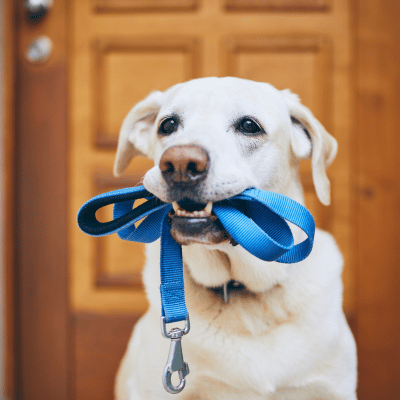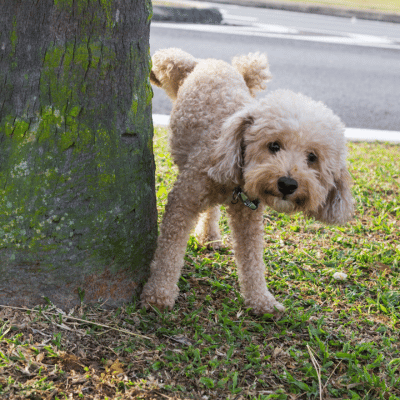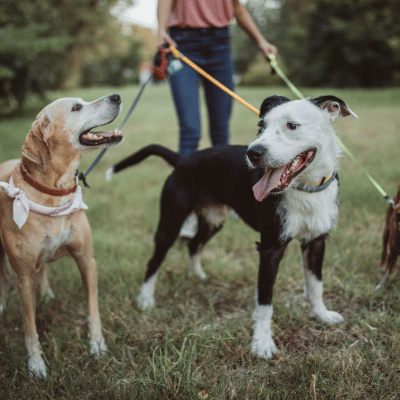How Often Should I Walk My Dog to Pee?
Taking your dog out for regular potty breaks is a fundamental aspect of responsible pet ownership. Beyond the obvious need for your dog to relieve themselves, these outings are essential for maintaining their overall physical and mental well-being. However, the frequency with which your dog needs to go out can vary significantly depending on several factors, including their age, breed, size, health, and diet. Understanding these factors is key to ensuring that your dog is comfortable, happy, and healthy.
Factors Influencing How Often Dogs Need to Pee
According to PetMD, beyond general bathroom needs, most dogs can tolerate 20 to 30 minutes per day. This varies greatly on the physical health of your dog and the breed. Some dogs in great physical health can tolerate walks for up to 2 hours or go hiking for hours at a time. However it may be difficult for overweight or obese dogs to walk for 10 minutes without taking multiple breaks or panting heavily due to the exertion. Breed, eating habits, size, age, and health condition should all be considered before implementing a regular walking routine.
 Age:
Age:
- Puppies: Puppies have small bladders and less control over their bladder muscles, which means they need to go out much more frequently. Generally, a good rule of thumb is that a puppy can hold their bladder for about one hour for every month of age. For example, a three-month-old puppy should be taken out every three hours.
- Adult Dogs: Adult dogs typically have better bladder control and can hold their bladder for longer periods. On average, adult dogs should be taken out three times per day, depending on their size, diet, and level of activity.
- Senior Dogs: As dogs age, they may start to lose some of their bladder control. This can result in them needing to go out more frequently, sometimes even during the night. Senior dogs may also be more prone to health issues that affect their urinary habits, making it important to monitor any changes in their bathroom behavior.
Breed and Size:
The breed and size of your dog also play a significant role in determining how often they need to go out. Smaller breeds tend to have smaller bladders, which means they may need more frequent potty breaks. On the other hand, larger breeds may be able to hold their bladder for longer periods. Additionally, certain breeds are more prone to specific health issues that can affect their urinary habits, so it’s important to consider these factors when establishing a potty schedule.
Health Conditions:
Health conditions can greatly impact how often your dog needs to go out to pee. Conditions such as urinary tract infections, kidney disease, diabetes, and other health issues can increase the frequency of urination. If your dog has been diagnosed with any of these conditions, it’s important to consult with your veterinarian to establish an appropriate potty schedule that meets their needs.
Diet and Water Intake:
Diet and hydration levels directly influence how often your dog needs to go out. Dogs that drink a lot of water or consume moisture-rich foods may need to urinate more frequently. Conversely, dogs that eat dry food and drink less water may not need to go out as often. It’s essential to ensure that your dog stays properly hydrated while also being mindful of their potty needs.
General Guidelines for Potty Breaks
Puppies:
When it comes to puppies, consistency is key. Until about 16 weeks old, puppies are not able to control the frequency of their urination. Puppies need to be taken out frequently, typically after meals, naps, playtime, and before bedtime. It’s important to establish a routine that helps them learn when and where they are supposed to relieve themselves. A good starting point is to take your puppy out every two hours and gradually increase the time between potty breaks as they grow older and gain more control over their bladder.
Adult Dogs:
For healthy adult dogs, it’s generally recommended to take them out three times per day. This schedule can vary depending on factors such as their diet, level of activity, and overall health. Adult dogs typically have more control over their bladder, so they can usually hold it for longer periods. However, it’s still important to ensure that they are getting enough opportunities to relieve themselves throughout the day.
Senior Dogs:
As dogs age, their bladder control may decrease, leading to more frequent potty breaks. Senior dogs may need to go out more often, especially if they have health issues that affect their urinary habits. It’s important to be patient and understanding with older dogs and to adjust their potty schedule as needed to accommodate their changing needs.
Signs Your Dog Needs to Pee
 Behavioral Signs:
Behavioral Signs:
Dogs often give clear signals when they need to go out. Some common behavioral signs include:
- Whining or barking at the door
- Pacing or circling around the room
- Sniffing the floor or furniture
- Scratching at the door or windows
- Sitting by the door and looking at you
Recognizing these signs can help you respond quickly and prevent accidents in the house.
Training Cues:
Training your dog to signal when they need to go out can be extremely helpful. Some popular methods include teaching your dog to ring a bell by the door or using a specific command to indicate that it’s time to go outside. Consistent training can make potty breaks more predictable and reduce the likelihood of accidents.
The Impact of Routine on Your Dog’s Health
Establishing a Routine:
Establishing a consistent potty schedule is crucial for your dog’s health and well-being. A regular routine helps your dog understand when they can expect to go out, which can reduce anxiety and behavioral issues. Dogs thrive on routine, and a consistent schedule can make potty training easier and more effective. Also, According to VCA Animal Hospitals, the one-on-one time spent on walks can help deter attention-seeking behaviors like whining or barking.
Consistency and Accidents:
Consistency in taking your dog out can significantly reduce the chances of accidents in the house. By sticking to a regular schedule, your dog learns to control their bladder and hold it until it’s time to go out. Inconsistencies in the schedule can lead to confusion and increase the likelihood of accidents.
Special Considerations for Apartment Dwellers
Limited Access to Outdoors:
For dog owners living in apartments, limited access to outdoor spaces can present challenges. It’s important to establish a schedule that works with your lifestyle and provides your dog with enough opportunities to relieve themselves. This may involve taking them out to nearby parks or designating specific times for potty breaks during the day.
Using Indoor Solutions:
In situations where outdoor access is limited, indoor potty solutions can be a helpful alternative. Options like pee pads, indoor grass patches, or litter boxes (for small dogs) can provide a convenient way for your dog to relieve themselves indoors. It’s important to properly train your dog to use these solutions to avoid accidents elsewhere in the home.
How Long Should You Wait Between Potty Breaks?
Daytime:
The amount of time your dog can hold it during the day depends on their age, size, and health. Puppies should be taken out every 2-3 hours, while adult dogs can usually hold it for 4-6 hours. Senior dogs may need more frequent breaks, depending on their health and bladder control. It’s important to observe your dog’s behavior and adjust the schedule as needed.
Nighttime:
During the night, most dogs can hold it longer, especially if they have been properly trained. Puppies may still need to go out once during the night, while adult dogs can usually hold it for 7-8 hours. Senior dogs may need a late-night or early-morning potty break to avoid accidents. It’s essential to establish a bedtime routine that includes a final potty break before settling in for the night.
 How to Help Your Dog Hold It Longer (If Necessary)
How to Help Your Dog Hold It Longer (If Necessary)
Training Techniques:
If you need to extend the time between potty breaks, there are training techniques that can help. Gradual increase in the time between breaks, rewarding your dog for holding it, and providing plenty of opportunities for bathroom breaks during the training process can be effective. It’s important to be patient and consistent, as forcing your dog to hold it for too long can lead to health issues.
Hydration Management:
While it’s important to ensure your dog stays hydrated, managing water intake can help reduce the frequency of potty breaks. Limiting water intake a few hours before bedtime or during times when you won’t be able to take your dog out can help them hold it longer. However, never deprive your dog of water for extended periods, as this can lead to dehydration and other health problems.
Avoid These Common Mistakes
- Pulling:
- Dogs pull because it works; stop the walk when they pull to curb this behavior.
- Zoning Out:
- Stay engaged with your dog to avoid missing potential hazards.
- Being Too Strict:
- Allow your dog to sniff and explore; walks should be enjoyable, not a strict heel exercise.
Use the Right Equipment
- Leash Length:
- A fixed-length leash about six feet long is ideal.
- Collar Choice:
- Use a flat collar for safety and comfort.
- Avoid Flexible Leashes:
- They can snap, cause injuries, and give your dog too much freedom to encounter hazards before you can intervene.
The Importance of Regular Vet Check-ups
Health Monitoring:
Regular vet visits are crucial for monitoring your dog’s health, especially when it comes to urinary habits. Your vet can check for any underlying health issues that might be affecting your dog’s bathroom needs and provide guidance on managing these conditions. It’s important to keep track of any changes in your dog’s behavior and consult your vet if you notice anything unusual.
Addressing Concerns:
If your dog suddenly starts needing to go out more frequently or has accidents in the house, it’s important to consult your vet. Changes in bathroom habits can be a sign of underlying health issues, and early detection is key to managing these conditions effectively.
Tailoring the Schedule to Your Dog
Every dog is unique, and their potty needs can vary based on their individual characteristics. It’s important to observe your dog’s behavior, take note of any changes, and adjust their potty schedule accordingly. By understanding your dog’s needs and creating a schedule that works for both of you, you can ensure that your dog remains comfortable and healthy.
We hope this comprehensive guide has provided you with valuable insights into managing your dog’s potty needs. If you have any questions or would like to share your experiences, please leave a comment below. Don’t forget to subscribe to our blog for more tips on dog care and health.
Contact Scoopology for Your Pet Needs
Call Today
(360) 743-3926
Servicing: Kitsap, Grays Harbor, Thurston, Mason, Pierce, and King Counties
Get an Instant Quote
Frequently Asked Questions (FAQs)
Q: What if my dog frequently needs to go out?
A: If your dog frequently needs to go out, it could be a sign of an underlying health issue, such as a urinary tract infection or diabetes. It’s important to consult your vet to rule out any medical conditions and adjust their potty schedule as needed.
Q: How can I manage potty breaks while I’m at work?
A: If you’re away from home for long periods, consider hiring a dog walker or using indoor potty solutions like pee pads. You can also try to schedule breaks during the day or arrange for a neighbor or friend to take your dog out.
Q: Is it okay to leave my dog alone overnight?
A: Most adult dogs can hold it overnight, but puppies and senior dogs may need a late-night or early-morning potty break. It’s important to establish a bedtime routine that includes a final potty break before settling in for the night.

